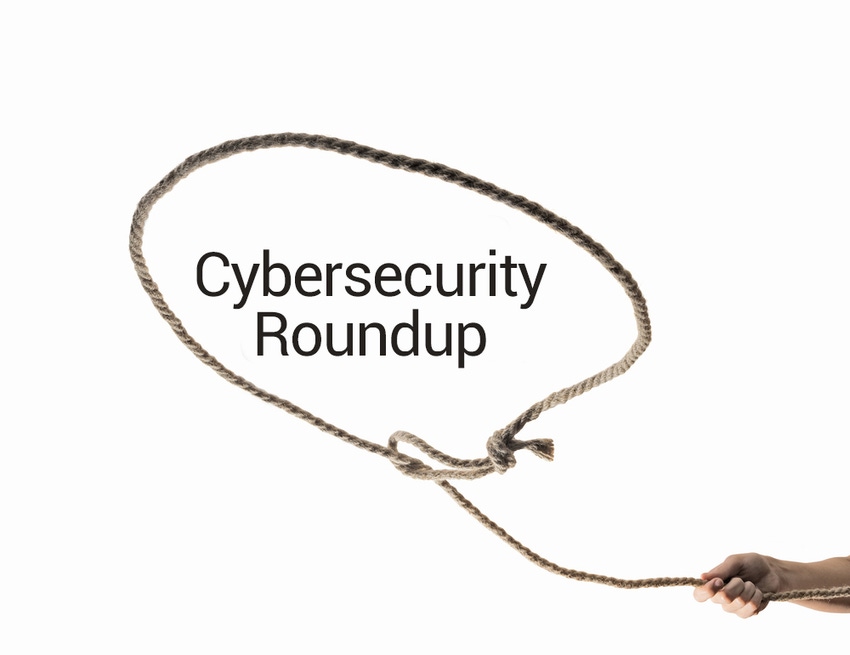Election security offers big opportunities for MSSPs.

What better time to discuss election security, or the lack thereof, than President’s Day?
Problems with the Iowa Democratic Caucus and a bipartisan Senate Intelligence report confirming Russian interference in the 2016 election are raising concerns about the security and accuracy of upcoming primary and general elections.
So what needs to be done by who to secure upcoming elections? To find out more, we spoke with David Mason, director of channel partner success at SiteLock.
Channel Futures: What aren’t those holding elections doing what they should be doing to ensure optimum cybersecurity? And what aren’t candidates doing that they should be doing?
David Mason: Those who are holding elections are running on a tight budget, which limits the amount of resources they can allocate toward increasing cybersecurity measures. Hackers are becoming increasingly sophisticated, so those holding elections need to do more to ensure optimum cybersecurity to protect voter information and guarantee accurate election results. This can be achieved by choosing an MSSP that offers a wide range of security solutions and the right level of expertise to help build out a package tailored to the customers budget and specific security needs.

SiteLock’s David Mason
When it comes to candidates, they should not only partner with security experts to ensure their campaign is protected from hackers, but also ensure that cybersecurity is a part of their platform. Once in office, these elected officials can make sure we implement the necessary policies to increase innovation and funding to guarantee future elections are not affected by malicious actors. One of the best ways a candidate can achieve this is by partnering with a trusted MSSP that can not only audit existing security practices, but also provide clear guidance on how to build a comprehensive and bulletproof security strategy.
CF: How can MSSPs and other cybersecurity providers help ensure secure elections?
DM: To ensure elections remain safe, MSSPs and other cybersecurity providers must first ensure they have a … comprehensive portfolio of security solutions to meet the specific security needs of these clients including endpoint, website and email security solutions at a variety of price points. If they have these solutions available, they could consider volunteering these services or offering them at a discounted rate that election organizers can afford. By expanding these offerings to election officials and polling places, MSSPs and cybersecurity providers can ensure safe elections while further reinforcing their reputation in the community as a trusted security advisor and resource.
CF: Is the shortage of cybersecurity talent impacting elections? If so, what can be done about that?
DM: The shortage of cybersecurity talent is impacting the entire industry and is sure to affect elections. Because cybersecurity professionals are high in demand, they can be selective about what companies and projects they work for. If elections are unable to offer these professionals the compensation they require, it will be difficult to …
… attract adequate talent. To help fill any gaps, consider leveraging an MSSP as an alternative solution. An MSSP will already have this talent in place and will also offer robust security solutions and training.
If budget adjustments are out of the cards, election officials should invest in cybersecurity awareness training so that their current team members can do their part to keep the elections secure.
CF: How can election officials identify threats and utilize top talent to protect the polls?
DM: Since most election officials don’t come from a cybersecurity background, it is important that they are proactive about planning and partner with [an] MSSP that offers a wide range of cybersecurity solutions as well as proven expertise to provide guidance and recommendations on how to best protect themselves. Election organizers should also provide polling officials with the necessary cybersecurity training to ensure they are prepared in the event of an attempted interference. As demonstrated by the failed Iowa Caucus app, technology can make elections more difficult if officials are not properly trained.
Automation also can help ensure safe elections, according to Terry Simpson, technical evangelist at Nintex. One of the primary benefits of automation is predictable and consistent execution of processes, he said.
“Most process automation involves configuration with rules-based logic that reduces risk of human error and interference, and increases processing capacity,” he said. “A solid automation platform, combined with proper governance and testing, will result in safer election processes.”
Automation solutions are available to anyone and everyone these days, Witt said. Ease of use and rapid implementation can allow campaigns and election managers to automate key processes quickly.
“Use cases might include online forms for rapid, accurate information-gathering, workflows to manage communications and document reviews;,and analytics dashboards to visualize key progress metrics,” he said. “Platforms like this make it possible for non-technical citizen developers to ensure the integrity and accuracy of election-related processes.”
Survey Shows Many Customers Ditch Companies After a Cyber Breach
A new survey by Security.org shows a significant portion of customers may never do business with a company after it’s been breached.
More than 1,000 people were surveyed, including more than 300 data breach victims, and among the findings:
Nearly one in four people stop doing business with companies that have been hacked, and more than two in three people trust a company less after a data breach.
More than one in five is unwilling to give their financial information to a company that’s been hacked.
Ninety-two percent of people agree that companies are financially liable to their customers after a breach.
Less than one in 10 people will give a company their financial information within a month after they’ve been breached.
Ryan McGonagill, Security.org’s CMO, tells us that once a data breach has occurred, the best possible course of action is transparency. Companies need to be able to explain to customers that they’ve identified how the data breach occurred and present a …
… clear, focused course of action detailing how it’s being remedied, how it won’t happen again, and what those affected can do to protect themselves from potential damages, he said.

Security.org’s Ryan McGonagill
“Depending on the nature of the breach and the information taken, it may also be necessary to make good-faith financial restitution or offer a complimentary service – such as we’ve seen with free credit monitoring from Equifax,” he said.
Cybersecurity providers are an integral component of companies’ efforts to repair customer perception, and they’ll most certainly be included in the dialogue with customers about how future data breaches won’t happen, McGonagill said. Depending on the provider, they may also be involved with the initial forensic fact-finding about how the data breach occurred in the first place. A company’s partnership with a knowledgeable cybersecurity provider can go a long way towards restoring customers’ perceptions after a breach, he said.
In the current climate, a case can be made that not being breached may actually be a competitive advantage, McGonagill said.
“Obviously, it’s better that companies always have the proper cybersecurity safeguards in place so that their customers’ information is secure,” he said. “That reliability is an easy selling point. This is my own speculation, but I would hazard that, from a consumer’s perspective, a company that has never had their data compromised looks more attractive than one that has.”
Cybersecurity should be on every company’s priority list in 2020 and beyond; h owever, while a company can have all the proper structural cybersecurity safeguards in place, one of the most proactive measures should be educating employees on the telltale signs of phishing emails to block the most likely point of entry for data breaches, McGonagill said.
Bitdefender Joins ThreatConnect Developer Partner Program
Bitdefender is now a member of the ThreatConnect Developer Partner Program, allowing the company to leverage ThreatConnect’s intelligence, automation, orchestration and analytics with the goal of helping bring new, joint solutions to market.
Bitdefender’s Advanced Threat Intelligence solution now will be accessible via the ThreatConnect platform.Threat intelligence users will be able to stay current with the latest updates in the data feeds without having to change configuration or write software code.
Jose Lopez, Bitdefender‘s vice president of global sales, service providers and technology licensing, tells us this will be especially beneficial to his company’s partners if they are already ThreatConnect channel partners and MSSPs because they will be able to offer his company’s threat intel feeds to their customers using the ThreatConnect integration.
“Our goal is to integrate our threat intel feeds with the majority of the threat intelligence platforms in the marketplace, starting with ThreatConnect,” he said. “Eventually, our partners will be able to sell our threat intel feeds to customers who are already using any threat intelligence platform.”
Bitdefender’s threat intelligence data is fueled by the Bitdefender Global Protective Network (GPN), which protects more than …
… 500 million systems and processes more than 15 billion queries per day.
“The goal at ThreatConnect has always been to enable security teams to make smarter, faster decisions,” said Andy Pendergast, ThreatConnect’s vice president of product. “For that reason, we are excited for Bitdefender to join the ThreatConnect Developer Partner Program. This partnership will enable us to develop strong operational use cases. Together, we can make a positive impact for our customers and users.”
eSentire Unleashes New Cloud Security Portfolio
eSentire has unveiled its new esCloud, a portfolio to monitor customer cloud environments and detect potential vulnerabilities.
Technical preview of esCloud will begin at the end of February, with general availability at the end of March. The portfolio will include support for Amazon Web Services (AWS), Microsoft Azure, Google Cloud Platform (GCP) and Microsoft Office 365, with support for Google G Suite, Salesforce, ServiceNow, Dropbox and Box to follow this year.
Chris Braden, eSentire‘s vice president of global channels and alliances, tells us esCloud represents a “terrific opportunity” for eSentire’s partners, particularly those who have developed a practice around selling and support AWS, Google and Azure cloud infrastructure and/or who manage Office 365 for their clients.

eSentire’s Chris Braden
“It will also represent new opportunity in the form of expanded market reach for eSentire’s managed detection and response (MDR) solution, enabling partners to provide MDR services to customers who are using IaaS infrastructure for most or all of their IT operating environment versus traditional LAN/WAN network structures,” he said.
esCloud for IaaS will provide real-time detection, response and containment capabilities for threats, misconfiguration, network anomalies and adherence to compliance standards. esCloud for SaaS expands the use of esLOG+ to ingest logs from SaaS environments.
“esCloud will further extend eSentire’s competitive advantages by adding a powerful new data ingestion capability for even greater reach,” Braden said. “esCloud represents a level of security for IaaS and Office 365 applications and environments not currently available with other MSSP offerings who refer to themselves as MDR, further expanding our competitive differentiation. This enables our partners to provide their customers with even greater value across more IT infrastructure architectures than are available from traditional MSSPs.”
PhoenixNAP Provides Customized Security Solutions to Partners
PhoenixNAP has rolled out its new Data Security Cloud (DSC) Advanced package for partner distribution.
By adding new security delivery models to DSC, phoenixNAP enables partners to address the needs of their customers more directly, and offers partners more flexible deployment models.
DSC is a secure, multitenant cloud infrastructure platform that provides clients with cloud security via virtualization and segmentation controls. Its architecture has been developed in collaboration with leaders in virtualization, hardware and infrastructure technology, the company said.
“The enhancements of DSC enable our partners to better cater [to] industries that require secure, compliance-ready, cloud-based infrastructure,” said Ian McClarty, phoenixNAP’s president. “As new emerging industry trends and frequency of data breaches are on the rise, security has emerged as a top priority for modern organizations. With DSC, midsize organizations can enjoy enterprise-grade data protection and greater performance. They can choose between DSC Essentials and DSC Advanced models, and secure their infrastructure for the always-on environment. These models also enable our partners to offer more customized solutions to their target markets.“
Read more about:
MSPsAbout the Author(s)
You May Also Like


